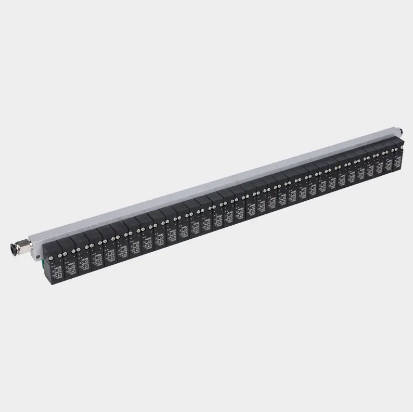
Compared with traditional valves, what are the advantages of Low power consumption combination valve in terms of energy efficiency?
Compared with traditional valves, Low power consumption combination valve have significant advantages in energy efficiency. These advantages are mainly reflected in the following aspects:
Reduced power consumption: First, the low-power combination valve uses new low-power materials, which not only have good mechanical properties and chemical stability, but also have lower resistivity and thermal conductivity. Low-power materials generate less heat when current passes through them, thus reducing energy loss. Secondly, the low-power combination valve has also been innovative in its structural design. By optimizing the flow channel design inside the valve, the fluid resistance is reduced and the energy consumption during the opening and closing process of the valve is reduced. At the same time, the low-power combination valve also adopts advanced sealing technology to ensure the sealing performance of the valve in the closed state and reduce energy loss due to leakage. In addition, the low-power combination valve also adopts advanced control technology. Through a precise electronic control system, precise control of the valve opening can be achieved, avoiding energy waste caused by excessive opening or closing. At the same time, the control system can also adjust the operating parameters of the valve according to actual needs to achieve a more energy-saving operating mode. Under the same working conditions, Low power consumption combination valve can significantly reduce energy consumption compared with traditional valves. This not only reduces the company's operating costs, but also reduces energy waste and environmental pollution. As the world's requirements for energy efficiency and environmental protection continue to increase, the application prospects of Low power consumption combination valve will become even broader.
Reduce the number of power supply devices: Due to its low power consumption, Low power consumption combination valve can significantly reduce the need for power supply devices, thereby reducing overall costs. From a volume perspective, reducing the number of power supply devices reduces the overall volume of the system. In traditional valve systems, a large number of power devices occupy valuable space, limiting the overall layout and scalability of the system. The low-power combination valve can significantly save system space due to the reduction in the number of required power devices, making the system more compact and efficient. Taking low-power solenoid valves as an example, due to its significant reduction in power consumption, the number of required power modules can be significantly reduced. Specifically, when using low-power solenoid valves, the number of required power modules can be reduced to about half. This not only reduces the cost, but also reduces the size, making the entire system more flexible and lightweight. In addition, reducing the number of power supply devices can help improve system reliability and stability. Excessive power supply devices not only increase the complexity of the system, but also increase the possibility of failure. The low-power combination valve simplifies the system structure, reduces the failure rate, and improves the reliability and stability of the system by reducing the number of power supply devices.
Reduce maintenance and repair costs: The high efficiency of the low-power combination valve enables it to complete the same task with lower energy consumption under the same working conditions. This not only reduces energy consumption, but also reduces the burden on the equipment itself. Due to the reduced power consumption, the workload of the valve's internal components such as coils, motors, etc. is also reduced, thereby extending their service life. Secondly, the low power consumption design also brings the characteristics of small coil temperature rise. In traditional valves, high power consumption often leads to an increase in coil temperature, which not only affects the performance of the valve, but may also cause overheating failure. The coil temperature rise of the low-power combination valve is small, and it can maintain stable performance even in long-term operation or high-temperature climate environments, reducing failures and maintenance requirements caused by overheating.
Efficient operation: The low pressure drop characteristics of the low-power combination valve allow pumps and compressors to operate efficiently, further improving energy efficiency. The low pressure drop of the ICF combination valve can significantly reduce energy consumption and improve energy efficiency.
In summary, the advantages of Low power consumption combination valve in energy efficiency are mainly reflected in reduced power consumption, reduced number of power supply devices, increased line transmission distance, reduced maintenance and repair costs, and efficient operation. These advantages enable Low power consumption combination valve to have higher energy efficiency and lower operating costs in applications such as smart homes, industrial automation systems, and agricultural irrigation systems.

 English
English 简体中文
简体中文



